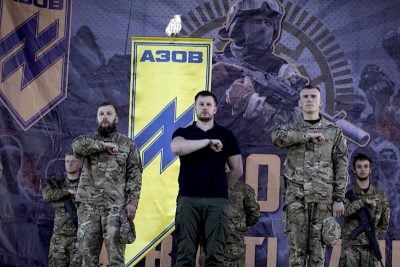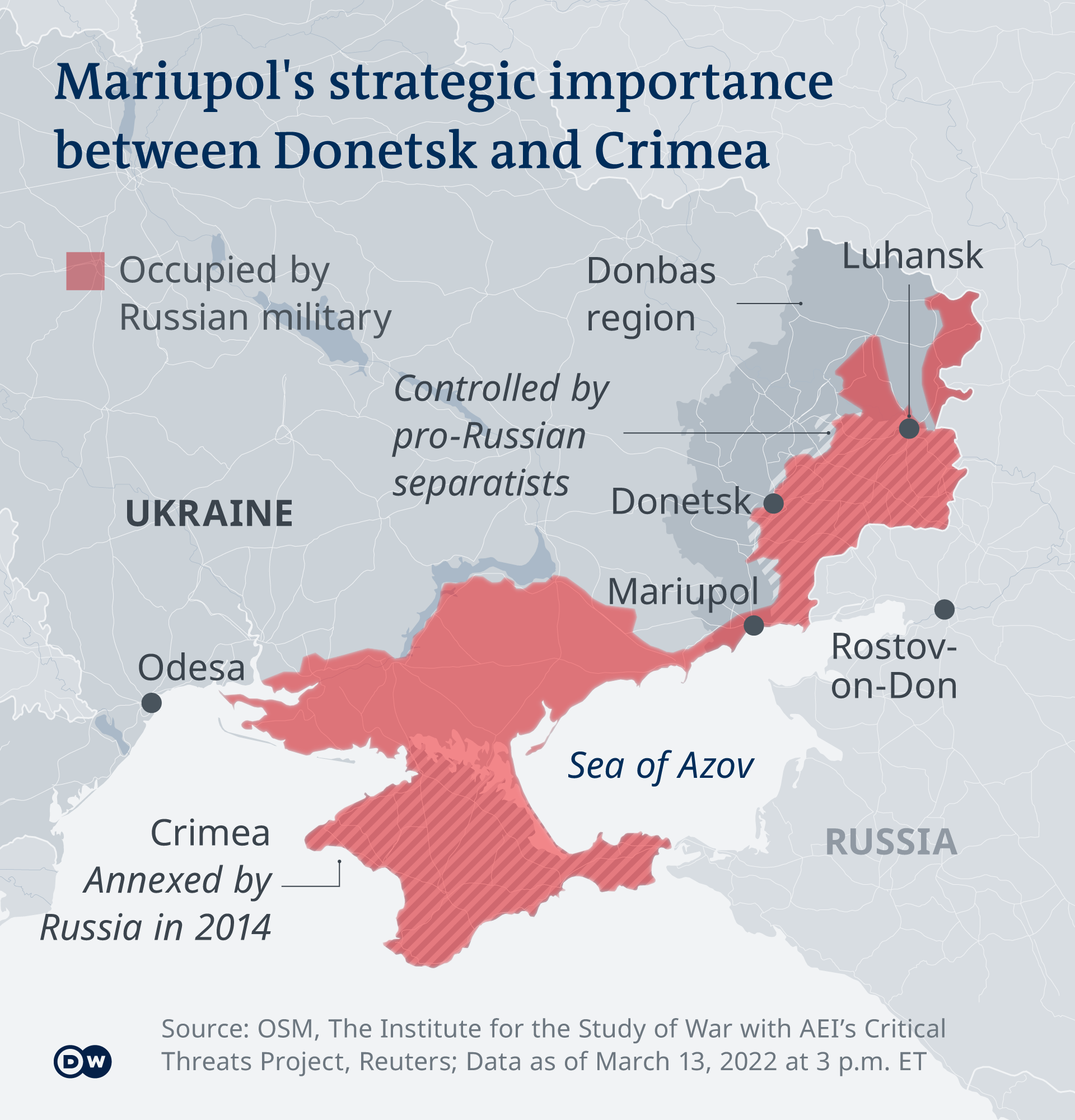The Azov Battalion: Extremists Defending Mariupol: Deutsche Welle
Some of the fighters defending Mariupol belong to the Azov Battalion, an ultranationalist militia with ties to extremists across Europe.

All Global Research articles can be read in 51 languages by activating the “Translate Website” drop down menu on the top banner of our home page (Desktop version).
To receive Global Research’s Daily Newsletter (selected articles), click here.
Visit and follow us on Instagram, Twitter and Facebook. Feel free to repost and share widely Global Research articles.
Incisive report by Deutsche Welle. Excerpts below with link to the Complete article
Our thanks to Deutsche Welle for bringing this report to our attention.
***
A short video doing the rounds on the internet shows a screen in what is presumably a Ukrainian military vehicle crossing a village in the area of Mariupol. On a side street, there are armored vehicles, on which a white letter “Z” is visible, the sign of Russian troops in Ukraine. Shots are heard and what is apparently a Russian vehicle opens fire.
The notorious Azov Battalion, also known as the Azov Regiment, posted this video earlier this week on its Telegram channel. It announced that it had destroyed three Russian armored vehicles and four infantry fighting vehicles, and killed “many infantry.” Then it released a picture of a dead man in uniform, purported to be a Russian general whom it had killed. It is difficult to verify these claims.
….
Mariupol: Azov’s headquarters
Mariupol is also where the Azov Battalion, which is part of the Ukrainian National Guard and thus subordinate to the Interior Ministry, has set up its headquarters. Its fighters are well trained, but the unit is composed of nationalists and far-right radicals. Its very existence is one of the pretexts Russia has used for its war against Ukraine.
…
Far-right connotations
Umland said Azov had drawn early attention by using the the Nazi Wolfsangel symbol as its emblem. “The Wolfsangel has far-right connotations, it is a pagan symbol that the SS also used,” said Umland. “But it is not considered a fascist symbol by the population in Ukraine.”
The Azov Regiment wants the symbol from the Nazi era to be understood as stylized versions of the letters N and I, standing for “national idea.”
Incorporated into the National Guard
Andriy Biletsky, the 42-year-old founder of Azov, is a history graduate of the National University of Kharkiv. He was active in Ukraine’s far-right scene for years. In the summer of 2014, the modest forces of Azov participated in the recapture of Mariupol from pro-Russian separatists. It has operated as a regiment since fall 2014 and according to media reports, it had around 1,000 fighters before the Russian invasion of Ukraine, as well as artillery and tanks.
The Ukrainian government decided to incorporate the ultra-nationalists into state structures in 2014.

…
Contacts with far-right movements
In 2019, there was an attempt by US Congress to designate the regiment as a “terrorist organization” but this did not happen.
Click here to read the full article.
*
Note to readers: Please click the share buttons above or below. Follow us on Instagram, Twitter and Facebook. Feel free to repost and share widely Global Research articles.
Featured image is by Sergei Bobylev/ITAR-TASS/Imagon

